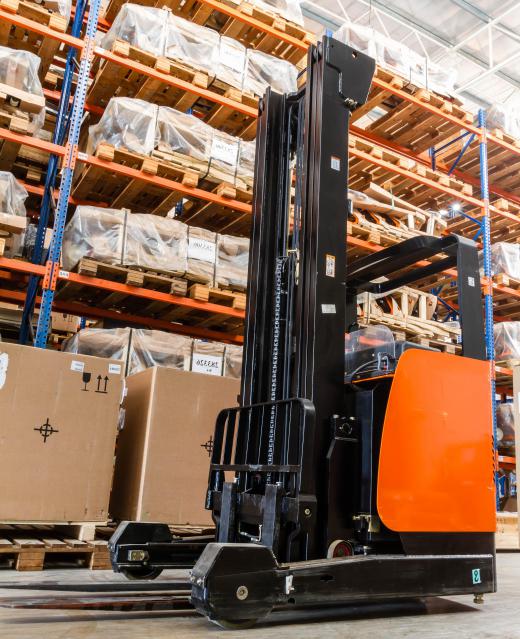Forklifts are common pieces of equipment found in manufacturing and industrial settings, and are available in various shapes, sizes, and capacities. Their primary purpose is to move pallets and other heavy loads, effectively reducing the amount of manpower required to perform the same function. There are many different types of forklifts available to meet most any need. Forklifts can be enormous in size — large enough to lift the family car — or small and narrow enough to fit down the aisle at the local hardware store. An electric forklift motor is the type of engine most often used for indoor forklift operation.
The location and purpose of a forklift often dictate what type of engine is necessary. For example, larger units such as those seen in lumberyards tend to run on conventional gasoline. When operating forklifts indoors, however, an electric forklift motor may be the wiser choice. Much of the operation ability remains the same, but the electric motor replaces the conventional gasoline-powered forklift engine. The advantage of a forklift powered by an electric forklift motor is the lack of exhaust fumes, which is why it is a popular choice for indoor operation.

Many companies that sell or rent forklifts offer to supply, service, and replace forklift parts, right on the work site. A conventional forklift engine has a multitude of moving parts, whereas the electric forklift motor has only the rotating armature similar to the one found in any electric motor. Having fewer moving parts typically reduces chances of failure. Since these engines are electric, however, their batteries require recharging on a regular basis. Just as a gas-powered forklift engine needs gasoline refills, an electric forklift motor needs its batteries recharged, since neither type of engine will run very long without replenishment.
An electric forklift motor is preferable in certain environments instead of the conventional forklift engine that runs on gasoline or propane. Electric forklift parts are just as readily available as the parts needed for any other type of forklift. Companies that make their living selling forklifts are generally happy to accommodate a customer’s needs, whether the forklift is intended for indoor or outdoor use, heavy or light duty, or with ride-on or walk-behind operation. Forklifts are known for their heavy lifting capabilities, regardless of whether they run on conventional fuel or batteries. The environment is the determining factor for whether or not to choose an electric forklift motor.
